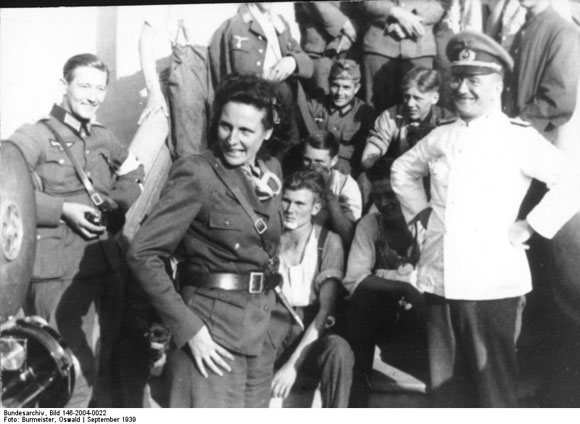Abstract
On September 10, 1939, shortly after the invasion of Poland, Leni
Riefenstahl (1902-2003) was at the Polish front, where, at Hitler’s
behest, she began filming a documentary on the Polish campaign. This
photograph shows her with members of the 14th Army Corps. In addition to
her film reporter’s uniform, Riefenstahl wears one of the pistols with
which she had personally outfitted her crew, “Special Film Troop
Riefenstahl” [Sonderfilmtrupp
Riefenstahl]. Her stay on the Polish front only became publicly
known at the end of the 1940s, with the discovery of photographs that
showed her standing by as Wehrmacht soldiers massacred the Jewish
population of the Polish town of Konskie on September 12, 1939. Nineteen
Polish Jews were killed and many others severely injured. Riefenstahl
always denied having had any knowledge of this war crime, but her denial
is contradicted by the existence of a photograph bearing the
inscription: “Leni Riefenstahl faints upon seeing the dead Jews.”
Throughout her whole life, Riefenstahl maintained that she was never an
ardent supporter of National Socialism. She explained her stay in Poland
by claiming that she had wanted to make herself useful as a war
correspondent. But her propaganda films, the proximity of her “fascist
aesthetics” to Nazi racial doctrine, and her documentation of the
invasion of Poland make her attempts to present herself as an apolitical
artist seem highly implausible.
